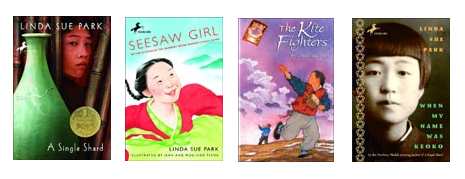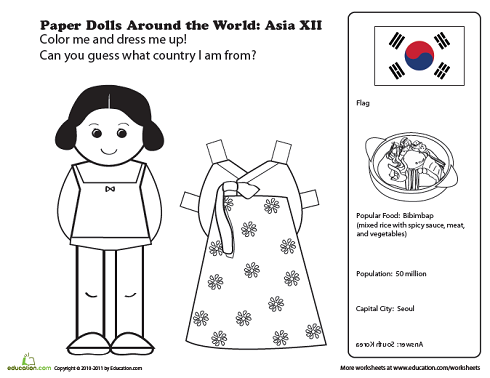
My kids and I are huge fans of award-winning writer, Linda Sue Park. Her book, A Single Shard, is one of our favourites. It is a vividly told tale set in Ch’ul’po, a potter’s village, in 12th-century Korea. The protagonist is 10-year-old orphan, named for a mushroom that grows “without benefit of parent-seed”. He was raised by Crane-man (he has a shrivelled leg). These two outcasts make their home under the bridge and scavenge for food, refusing to beg or steal. When he accidentally breaks a pot belonging to Min, a master potter, he has to work off his debt and this sets off a series of change. I won’t say more except that if you like a story about loyalty, courage and love, then this is the book for you.
My friend at Tea and A Think is a fellow fan of the book :) She has compiled a wonderful list of facts on Korea and links to celadon pottery and Korean food. You can do a great unit study based on these links and her other book recommendations.
We’ve also enjoyed Linda Sue Park’s other books. I strongly believe in using living books and hers are wonderful for History and Geography. See Saw Girl tells of Jade, a girl of good social standing in 17th-century Korea who longs to see the world. Women then did not leave home (LITERALLY) till they married and then, did not ever step outside the walls of their marriage home. The Kite Fighters is about two brothers Kee-Sup and Young-Sup in 15th-century Korea. Young-Sup, the younger, often feels envious of his older brother, who seems to be favoured simply because he is the first-born. When the young king enlists their help for a kite competition, they learn to complement each other and understand each other better.
When My Name Was Keoko takes us to a more contemporary time – 1940 to the end of the second World War. Korea has been occupied by the Japanese since 1910 and their oppressive rulers are determined to erase the Korean identity and culture through propoganda and outright force. We see the struggle of the Korean people through Sun-hee (who is forced to take on the Japanese name Keoko) and her brother Tae-yul who narrate the story in turns. Each of the characters we meet show courage in their own unique way. We learn not just about role of Japan in WW2 but also what happens to Korea after it regains its independence. What makes this story even more meaningful is that the characters were inspired by true stories told by the author’s friends and family.
Korean paper doll – lots more paperdolls from all over the world available for download at Education.Com




